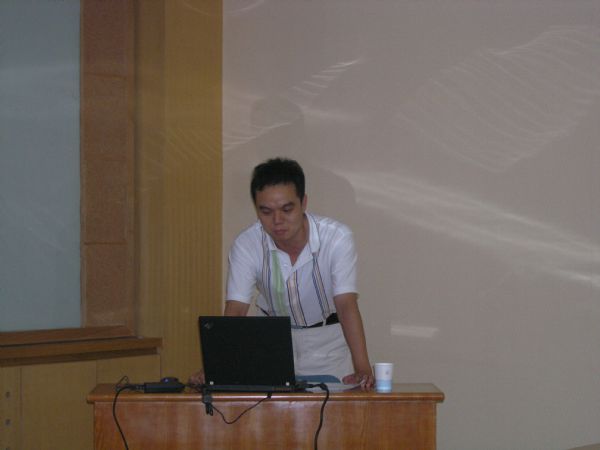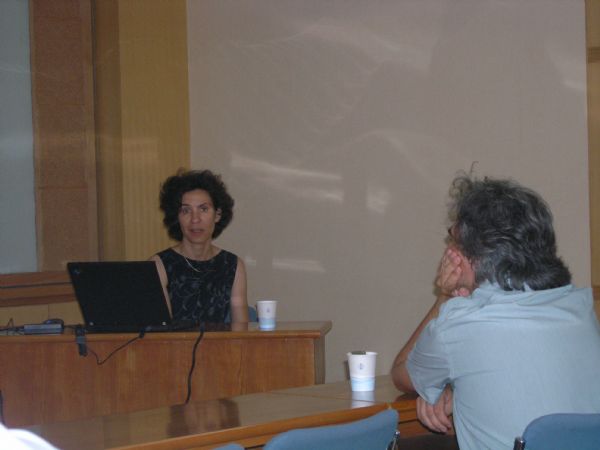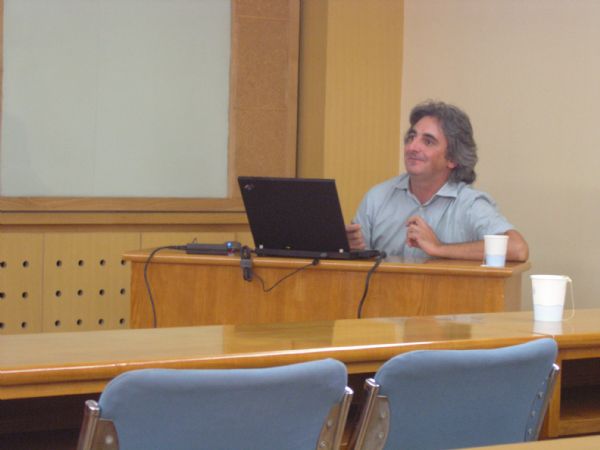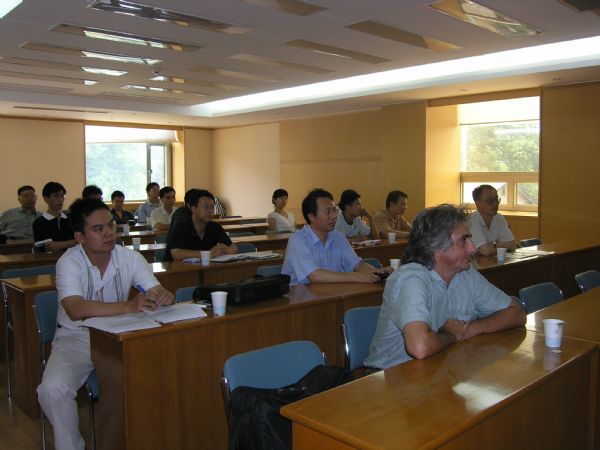In answer to the invitation of Prof. Wang Xiuming, Dr. Umberta Tinivella and Dr. Flavio Accaino from the National Institute of Oceangraphy and Experimental Geophysics (OGS) visited our institute on Aug.1 and gave wonderful reports, respectively.
Dr. Umberta Tinivella joined the OGS in 1996 and had been long devoted to the research of the physical properties of gas hydrate and the relationship between seismic waves, logging and experimental measuring. She also put forward the method of using the measured data to recognize the overpressure zone in stratum and cumulated plentiful practical experience. Now she is in charge of several programs related to gas hydrate in OGS. While Dr. Flavio Accaino put his emphasis on the collection and process of the seismic waves data and inversion of the seismic profiles. The two reports they gave us titled: "Seismic Exploration and Quantification of Hydrate in Marine Sediments: the Theory" and "Seismic Velocity Field to Quantify Hydrate and Free Gas: the South Margin Case Study". The two reports were both on the forming mechanism, collecting method of the gas hydrate and the latest field measuring results.
The reports attracted many professors and students in our institute. After the reports, the speakers had a friendly and warm discussion with the audience.

Lin Weijun

Dr. Umberta Tinivella

Dr. Flavio Accaino

About Gas Hydrate:
A gas hydrate is a crystalline solid; its building blocks consist of a gas molecule surrounded by a cage of water molecules. Thus it is similar to ice, except that the crystalline structure is stabilized by the guest gas molecule within the cage of water molecules. Many gases have molecular sizes suitable to form hydrate, including such naturally occurring gases as carbon dioxide, hydrogen sulfide, and several low-carbon-number hydrocarbons, but most marine gas hydrates that have been analyzed are methane hydrates. (From http://woodshole.er.usgs.gov/project-pages/hydrates/what.html)
(The two pictures are from Dr. Umberta Tinivella's report)
|